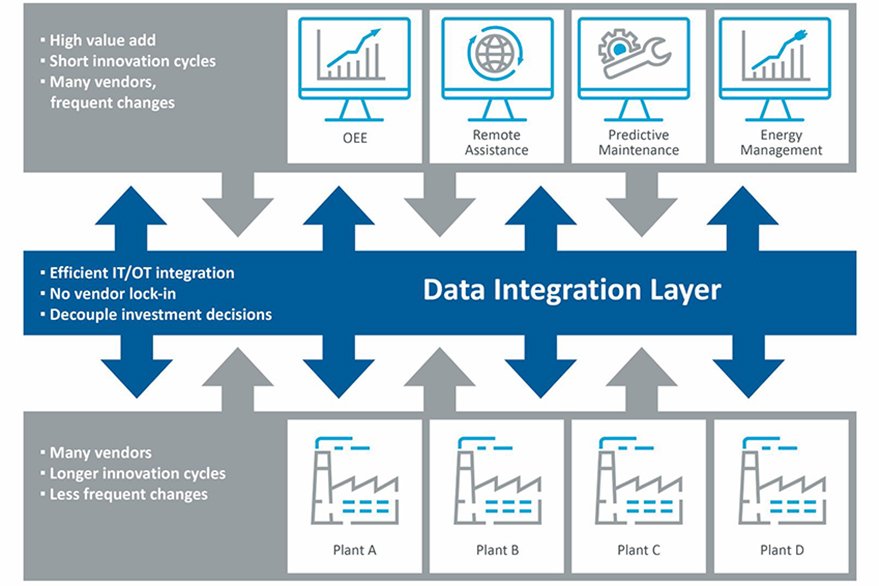The evolution of the Gateways
Into the cloud with the IIoT gateway

When it comes to expanding and operating innovative IoT solutions, IT architectures have a key role to play. What architectural issues arise at the interface between IT and OT, and how does this interface relate to 'edge' and 'cloud'? If you take these questions into account during planning you can fully exploit the potential of software, IT and innovative algorithms and make your production more efficient.
Why is a good IT architecture so important?
A good IT architecture:
- allows project entry at manageable costs, is reusable, future-proof, and can be flexibly expanded.
- allows the use of a central platform so that applications can be deployed across plants and across different locations.
- takes into account the fast innovation cycle in IT.
- reduces the total cost of ownership of an IIoT solution.

Data integration needs flexible solutions
As traditional industrial automation software applications move to new IIoT solutions, the requirements for IT/OT integration change. Previously, the focus was on low maintenance and ease of use of specialized gateways. Now, flexible, and automatable configuration, interface abstraction and IT security are needed.
This leads to two key characteristics of new solutions for data integration:
- Gateways have advanced functionalities and perform complex data integration tasks. These include, for example, aggregating multiple data sources into one server, and enriching the OT interface with semantic information to simplify software application development.
- Operating concepts can be implemented appropriately. This means that a data integration solution can be operated efficiently over the entire lifetime of the plant, in interaction with a central IoT or cloud platform. Software virtualization technologies in particular play an important role here.
The traditional gateway turns into a software platform
Gateways as autonomously and locally operated components of the automation network are being replaced by software solutions that can be managed efficiently and are operated on standard hardware. Softing's response to this development was to expand the dataFEED product family into a software platform for efficient data integration in innovative and flexible Industrial IoT solutions. The latest development in the dataFEED family - edgeConnector Siemens - is the first product based on container technology. As a Docker container, this software module offers flexible deployment options, e.g., on devices running edge services from large cloud platforms (Azure IoT Edge or AWS IoT Greengrass), but also independently of these platforms.

Do you have any questions about this topic? We will be glad to help you. Get in touch with us!
For a deeper dive into the topic, click here to read the technical article in the November 2020 edition of the Industrial Ethernet Book.
